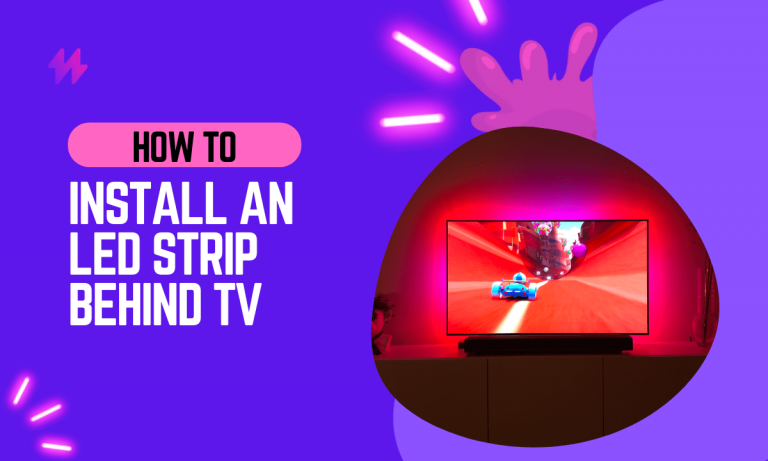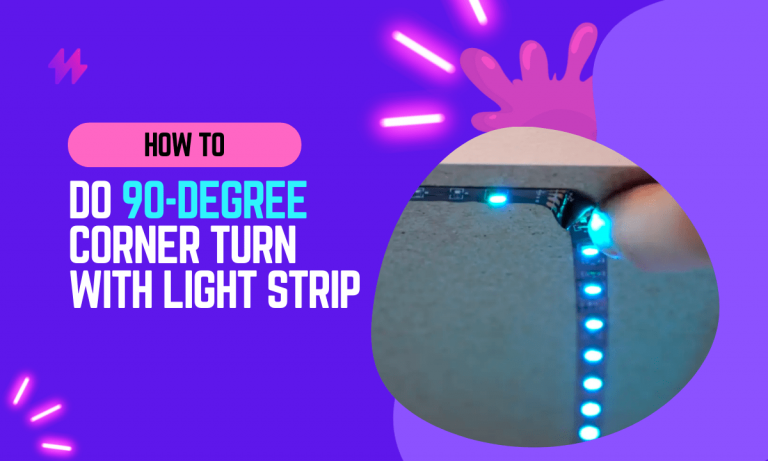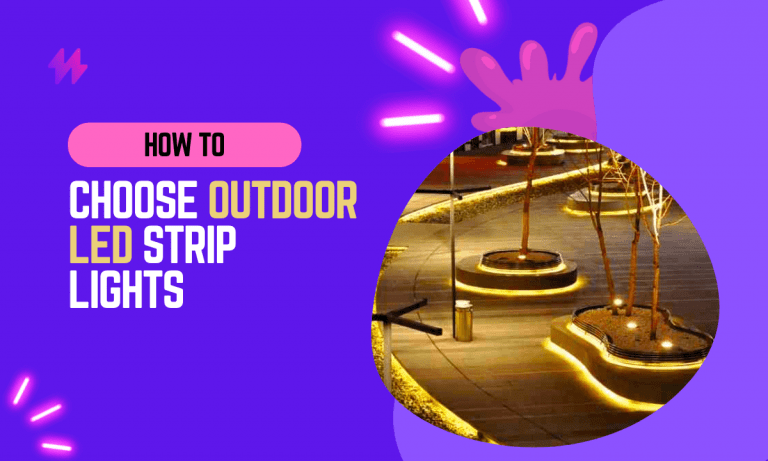How Long Do LED Light Strips Last?
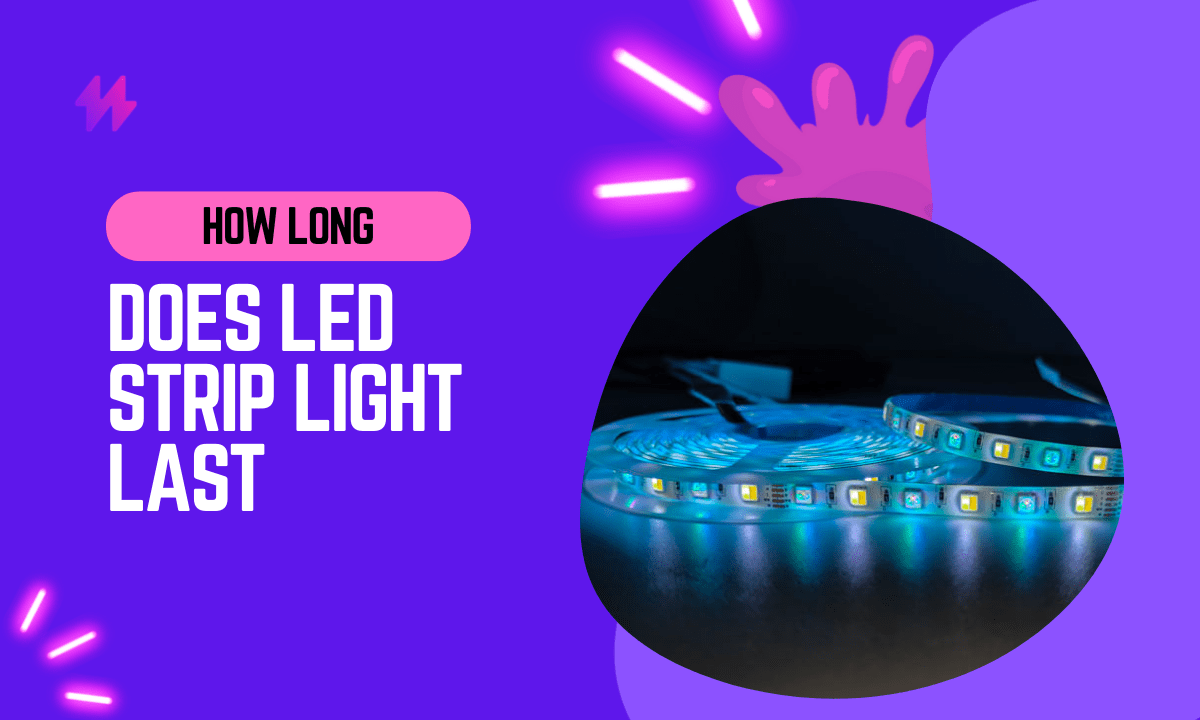
LED light strips are a great way to add some extra light to a room, but they don’t last forever. After a time, they start to fade and lose their luster. But what causes this? And what can be done to prevent it? In this article, we will explore the factors that affect LED strip life, and how you can extend its lifespan.
To ensure your LED light strips provide high-quality light and maintain their original brightness over time, it’s essential to consider the type of materials used in their construction. Investing in reliable LED strip products with a strong lumen maintenance rating can significantly enhance their longevity, making them a worthwhile lighting choice for various indoor lighting applications.
LED Strip Lights Longevity: Key Factors and Average Lifespan
LED light strips are made up of several small LED bulbs. These bulbs have a lifespan of around 50,000 hours. However, the light strip as a whole will not last that long. Several factors can affect the lifespan of an LED light strip.
It is important to note that these lifespans are only estimates. Actual lifespans may vary depending on the conditions in which they are used. For example, if a Dimmable LED light strip is used in a particularly humid environment, it may not last as long as one used in a dry environment. It is also important to keep LED strips cool; if they get too hot, their lifespan will be reduced.
LED light strips are composed of several small LED emitters that collectively provide a dependable light source. While individual LED bulbs can last for about 50,000 hours, the overall lifespan of the LED strip can be influenced by various factors, such as heat and humidity. It’s vital for consumers to select LED strip lights from reputable manufacturers to guarantee optimal performance and longevity. For achieving long-lasting illumination, investing in a quality LED strip will not only enhance your lighting project but also ensure reliable illumination over time.
Understanding the Causes of LED Light Strips Failure: Key Insights
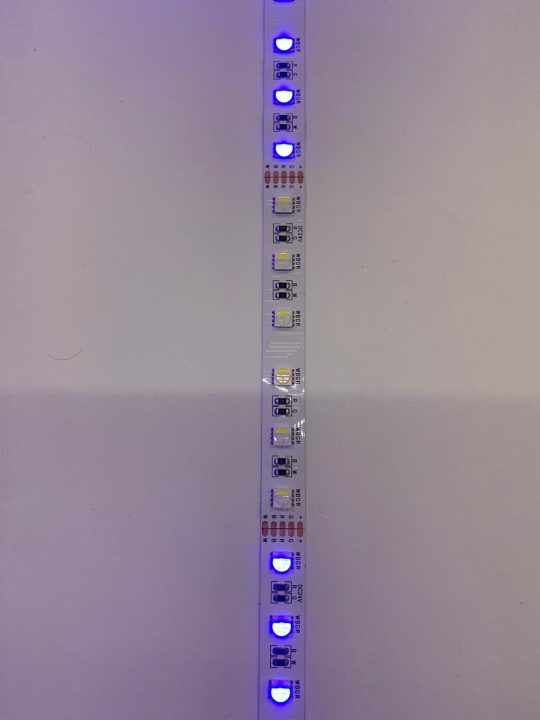
There are several factors that can cause an LED light strip to fail prematurely. One of the most common is water damage. If an LED strip gets wet, it can short-circuit and stop working. Even high humidity can cause problems, as it can cause the strips to corrode over time.
Another common problem is physical damage. If an LED strip is bent or crushed, it can break the internal circuitry and cause the strip to stop working. Additionally, if an LED strip is exposed to too much heat, it can also stop working.
Finally, a less common but nonetheless possible problem is manufacturing defects. In some cases, an LED light strip may be defective from the factory and not work correctly.
You may also like: What’s the width size of LED light strip?
To mitigate potential issues that could affect LED light strips, it’s important to consider their environment for optimal performance. Utilizing low-heat lighting options can help preserve the long led lifespan and prevent early failure, ensuring that your chosen lighting fixtures remain functional for many hours.
10 Crucial Factors That Impact the Lifespan of LED Light Strips
1. The quality of the product: Beware of buying cheap, low-quality LED light strips. You want to make sure the strip you’re buying is a well-known and reliable brand.
2. How often it’s used: The more you use your LED light strip, the shorter its lifespan will be. If you only use it occasionally, it will last longer than if you use it all the time.
3. The temperature: As we mentioned before, heat is one of the biggest enemies of LED light strips. If you live in a hot climate or keep your home very warm, your light strips may not last as long as those in a cooler climate.
4. How it’s used: If you use your LED light strip for decoration only, it will last longer than if you use it for practical purposes like lighting a workspace. This is because decorative light strips are typically not turned on for as long as practical light strips.
5. How bright it is: The brighter your LED light strip, the shorter its lifespan will be. This is because brighter light bulbs produce more heat, which can shorten the lifespan of the bulb.
6. The quality of the installation: If you install your LED light strip properly, it will last longer than if you don’t. This is because proper installation helps to ensure that the strip doesn’t get damaged and that it stays cool.
7. How well it’s protected: If you protect your LED light strip from damage, it will last longer than if you don’t. For example, if you use a clear protective cover over your strip, it will last longer than if you don’t.
8. How often it’s cleaned: If you keep your LED light strip clean, it will last longer than if you don’t. This is because dirt and dust can build up on the strip and cause it to overheat.
9. How well it’s ventilated: If your LED light strip is well-ventilated, it will last longer than if it isn’t. This is because good ventilation helps to keep the strip cool and prevents it from overheating.
10. How old it is: In general, newer LED light strips will last longer than older ones. This is because technology has improved over time and newer strips are better made than older ones.
These are just some of the factors that can affect how long LED light strips last. If you want your light strip to last as long as possible, it’s important to consider all of these factors when making your purchase.
When selecting LED light strips, understanding the factors that can influence their lifespan is crucial to achieving optimal performance. Regular maintenance, such as cleaning to prevent dust accumulation and ensuring proper ventilation to mitigate heat, can significantly improve LED longevity. To answer the common question of how long do LED light strips last, careful consideration of these aspects is essential for a long-lasting option. By adhering to best practices in care and installation, you can enhance your experience with these modern lighting technologies and maximize the quality of their light output.
How to Extend the Lifespan of LED Light Strips | Discover How Long Do LED Light Strips Last
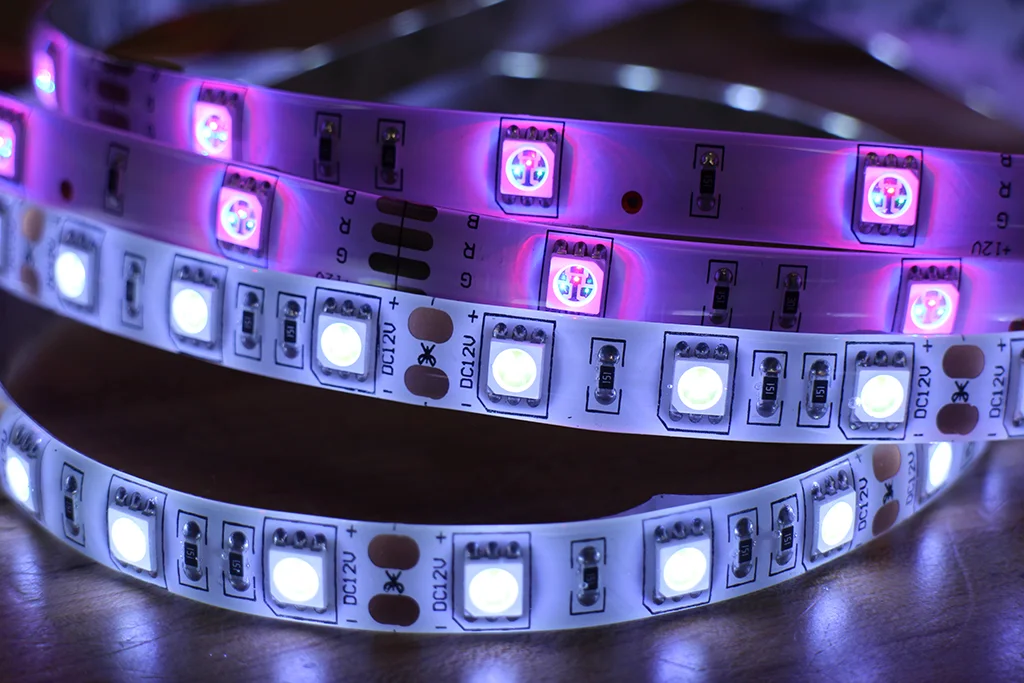
Now that you know what affects the lifespan of LED light strips, you may be wondering how you can increase how long they last. Here are a few tips:
1. Buy high-quality strips: As we mentioned before, the quality of the product is one of the most important factors in determining lifespan. If you buy high-quality LED light strips, they will last longer than cheap, low-quality ones.
2. Use them less often: The more you use your LED light strips, the shorter their lifespan will be. If you only use them occasionally, they will last longer than if you use them all the time.
3. Keep them cool: As we mentioned before, heat is one of the biggest enemies of LED light strips. If you keep your light strips cool, they will last longer than if you don’t.
4. Install them properly: If you connect your LED light strips properly, they will last longer than if you don’t. This is because proper installation helps to ensure that the strip doesn’t get damaged and that it stays cool.
5. Protect them from damage: If you protect your LED light strips from damage, they will last longer than if you don’t. For example, if you use a clear protective cover over your strip, it will last longer than if you don’t.
6. Keep them clean: If you keep your LED light strips clean, they will last longer than if you don’t. This is because dirt and dust can build up on the strip and cause it to overheat.
7. Ventilate them well: If your LED light strips are well-ventilated, they will last longer than if they aren’t. This is because good ventilation helps to keep the strip cool and prevents it from overheating.
8. Upgrade to newer strips: In general, newer LED light strips will last longer than older ones. This is because technology has improved over time and newer strips are better made than older ones.
Following these tips can help increase how long your LED light strips last. If you want your light strip to last as long as possible, it’s important to consider all of these factors when making your purchase.
It’s clear that following specific guidelines can greatly enhance the LED strip lifetime and overall performance. By investing in high-quality LED lights from reputable manufacturers and ensuring proper ventilation, you can optimize their functionality, making them a cost-effective lighting option for various scenarios.
Average Lifespan of Popular LED Light Strip Brands
Now that you know what affects the lifespan of LED light strips, you’re probably wondering how long they actually last. Here is a list of the average life of some of the top LED light strip brands:
When considering how long LED light strips last, it’s essential to remember that various factors play a role in their durability, including the quality of the led light source and the environment they are placed in. By opting for reliable led strip suppliers and following proper installation techniques, you can enhance the longevity of these contemporary lighting solutions, ensuring that they continue to provide warm light output for a long time.
- Govee – 25,000+ Hours
- HitLights – 25,000+ Hours
- Philips Hue – 25,000+ Hours
- Feit Electric Smart Wifi – 15,000 Hours
- Wyze Lighting – 25,000 Hours
- Hafele Lighting – L80/B10 50,000 Hours (Single Color 20,000 Hours)
- Tresco Lighting – 25,000 – 50,000 Hours
- Hera Lighting – 50,000 Hours
Final Thoughts on the Lifespan of LED Light Strips
LED light strips are a great way to add some extra oomph to your home décor, and with careful use, they can last for years. Just be sure to avoid moisture and heat exposure, and make good electrical connections, and you should be good to go!
In conclusion, the lifespan of LED light strips is a significant factor to consider when integrating these versatile lighting solutions into your home or business. Typically, LED light strips are renowned for their longevity, often lasting between 25,000 to 50,000 hours depending on their usage and quality. This durability is one of the key advantages of LED technology, as it offers a substantial reduction in maintenance and replacement costs compared to traditional lighting options. Factors that contribute to the extended lifespan of LED strips include their low heat output, which minimizes wear on the diodes, and their solid-state construction, which is less prone to breakage.
Moreover, to maximize the longevity and efficiency of LED light strips, proper installation and maintenance are crucial. Ensuring that the strips are installed on a clean, smooth surface and are not subject to constant physical manipulation or exposure to moisture will help preserve their functionality. Additionally, using a suitable power supply and avoiding over-driving the LEDs with higher voltages than recommended can prevent premature aging of the strips. For those looking to get the most out of their LED strips, choosing high-quality products from reputable manufacturers and considering the specific environmental conditions of the installation area can lead to a more reliable and long-lasting lighting setup. By paying attention to these details, users can enjoy the full benefits of LED strip lighting, enhancing their spaces with effective, efficient, and enduring illumination.
How Long Do LED Light Strips Last | Understanding LED Light Strip Technology
Understanding the lifespan of LED light strips involves examining various factors influencing their longevity. Typically, LED lighting can last significantly longer than traditional incandescent bulbs, often outlasting them by tens of thousands of hours. The quality of the components used in the production of LEDs, such as resistors and capacitors, plays a crucial role. For example, low voltage LEDs generally exhibit longer durations compared to their traditional counterparts, like compact fluorescent lamps. Light output declines over time due to factors like power surges and consistent sunlight exposure. Studies in light longevity testing reveal that different LEDs can exhibit variable performance, making it essential to consider the specifications set by the LED manufacturer. For optimal results, understanding how long do LED light strips last requires attention to their intended usage in lighting layout design, ensuring they maintain their brightness and functional lighting over time.
How Long Do LED Light Strips Last | The Components That Influence Lifespan
Several components play a crucial role in determining how long LED light strips last. The quality of the LED itself is paramount, as higher-grade materials can withstand heat and maintain their original light output for extended periods. LED strip specifications such as voltage, current, and heat dissipation mechanisms greatly influence brightness and longevity. Understanding these factors can help users compare LED options like govee strip lights versus traditional lighting technologies, such as incandescent light bulbs and fluorescent bulbs. In light longevity tests, commercial lighting sources often show that LED options outperform incandescent lights and 4-ft fluorescent lamps.
Another key aspect impacting lifespan is the operating environment, which can contribute to light loss. Excessive heat from light fixtures or poor ventilation can cause brightness to diminish over time. For instance, long LEDs may endure better in well-circulated spaces compared to confined areas, where overheating is more likely. Usage patterns, such as periods of dimming or sustained full lighting capacity, also affect how long LED strip power will last. Whether used as a primary light source in ceiling lamps or as decorative rope lights, understanding how long do LED light strips last hinges on these essential components and conditions.
How Manufacturing Quality Affects Longevity
The quality of manufacturing significantly impacts how long do LED light strips last. High-quality components in LED lights, such as durable circuit boards and efficient heat sinks, contribute to a longer lifespan compared to lower-quality options. For instance, using premium materials in led headlights or desk lamp fixtures enhances their longevity. Conversely, cheaper alternatives may lead to premature failures, resulting in diminished brightness over time. This discrepancy is reflected in led longevity testing, which shows that traditional lighting lasts much longer than poorly manufactured LED lights.
Attention to detail during the manufacturing process can influence the overall performance of new lights. Variations in light output versus energy consumption will determine whether led grow lights or standard lamp fixtures remain reliable over extended use. While traditional bulbs may offer familiarity, they often lack the efficiency of LED offerings. As a result, customers often find that high-quality LED strips, such as those for dim lighting applications like a21 lamps or e12 lamp fixtures, provide superior performance. Poor manufacturing leads to issues like brightness diminishes quickly, affecting the eye’s comfort and overall satisfaction.
Typical Lifespan of Different Types of LED Light Strips
Understanding how long LED light strips last involves examining various types and their applications. Standard LED strips tend to have a lifespan that rivals traditional light bulbs, often exceeding 25,000 hours, while high-quality options can last even longer. The longevity of these light offerings can be influenced by factors such as electricity usage and the type of backlight used. For instance, hitlights today often boast advanced technology that minimizes bright decreases over time. The performance of an LED room lamp, for example, greatly depends on its manufacturing quality and proper maintenance. Overall, knowing how long LED light strips last requires an exploration of these variables and real-world user experiences.
Comparing Standard and HighQuality LED Strips
Standard LED light strips typically have a shorter lifespan compared to high-quality options. The longevity of these strips can vary significantly and often falls between 15,000 to 25,000 hours. How long do LED light strips last depends on the materials used and the manufacturing process. Standard strips may use lower-grade components that can lead to premature failure, resulting in a shorter operational life.
High-quality LED light strips, on the other hand, are designed with better materials and advanced technology. These strips can last up to 50,000 hours or more, significantly outperforming their standard counterparts. How long do LED light strips last in this case truly depends on factors like heat dissipation and power supply quality. Investing in high-quality LED strips can lead to increased efficiency and longer-term reliability, making them a preferred choice for many consumers.
Usage Scenarios and Their Impact on Lifespan
The longevity of LED light strips can greatly vary based on their usage scenarios. How Long Do LED Light Strips Last is often influenced by the environment where they are installed. For instance, strips used in outdoor settings face exposure to moisture and temperature fluctuations, which can shorten their lifespan. On the other hand, indoor strips used in stable conditions tend to last longer. Ultimately, the durability of these LED strips depends on how they are utilized over time, impacting the overall performance.
Another critical factor affecting how long do LED light strips last is the frequency and duration of use. Strips that are turned on for extended periods each day may experience a decrease in lifespan compared to those used intermittently. This is especially relevant in high-intensity settings, such as commercial spaces, where LED strips are frequently illuminated. Understanding these usage scenarios and their impact can help consumers make more informed choices regarding their LED lighting solutions.
Maintenance Practices for LED Light Strips
The longevity of LED light strips is significantly influenced by proper maintenance practices. How long do LED light strips last can often depend on simple yet effective cleaning techniques that prevent dust and grime buildup. Regular maintenance not only helps maintain brightness but also protects the internal components. Keeping LED strips away from excessive moisture and ensuring proper heat dissipation further contributes to their lifespan. Understanding these factors allows users to maximize how long do LED light strips last and enjoy reliable performance over time.
Cleaning Techniques to Enhance Longevity
Regular cleaning of LED light strips plays a crucial role in extending their lifespan. Dust and debris can accumulate on the surface, leading to heat retention and reduced brightness. How long do LED light strips last depends not only on the quality of the components but also on their maintenance. Keeping the strips clean helps to ensure they function efficiently and maintain their luminous output over time.
Using a soft, dry cloth or a microfiber cloth is recommended for cleaning. Avoid harsh chemicals or abrasive materials that could damage the strip or its adhesive backing. How long do LED light strips last will be significantly influenced by the care they receive. Proper cleaning techniques ensure that any potential hazards are minimized, allowing for prolonged use and better performance.
Ideal Operating Conditions for Optimal Performance
Maintaining optimal operating conditions significantly influences how long do LED light strips last. Proper ventilation is essential, as excessive heat can shorten the lifespan of the strips. Ideally, LED light strips should be installed in areas that allow for sufficient airflow to prevent overheating. High-quality installation ensures that the LED can effectively dissipate heat, which directly affects performance. With the right environment, users can enjoy the benefits of vibrant lighting for an extended period.
The surrounding environment also plays a crucial role in determining how long do LED light strips last. Humidity levels should be monitored, as excessive moisture can lead to electrical issues and corrosion. It’s best to keep LED strips away from damp locations unless they are specifically designed for wet environments. The brightness settings used frequently can also affect longevity, as running LEDs at full capacity continuously can decrease their lifespan. Therefore, understanding how your LED light depends on these conditions can help maximize its performance and durability.
RealWorld Experiences with LED Light Strips
Customer reviews highlight varying experiences regarding the longevity and reliability of LED light strips. Many users express satisfaction with how long they last, often pointing to quality manufacturing and usage practices as key factors. Feedback indicates that how long do LED light strips last depends significantly on the components and the environment in which they are installed. Some report issues related to flickering or failure after shorter periods, emphasizing the importance of selecting higher-quality options. Overall, real-world insights provide valuable context for understanding how long do LED light strips last in everyday applications.
Customer Reviews on Longevity and Reliability
Many users express varying experiences regarding how long do LED light strips last. Some customers report that high-quality brands significantly outlast cheaper alternatives, leading to fewer replacements over time. This longevity often relates to the specific components used in the manufacturing process, as higher-grade LED strips are designed to withstand prolonged use and adverse conditions. Feedback indicates that longevity can also depend on the way these strips are utilized.
Reliability remains a common theme in customer reviews. Several users highlight that well-maintained LED strips can last far longer than expected, showcasing that optimal care can truly impact lifespan. A number of reviews emphasize that some brands consistently provide great performance, while others fall short, leading to questions on how long do LED light strips last. Reliable performance over extended periods reassures many consumers that their investment in LED lighting is worthwhile.
Common Issues Faced by Users Over Time
Users often report issues related to brightness and color consistency as their LED light strips age. Factors like heat dissipation and electrical surges can contribute to these inconsistencies. For many, understanding how long do LED light strips last becomes crucial. The performance of these lights depends not only on their quality but also on how they are utilized in different environments.
Another common problem is the adhesive backing losing its effectiveness over time. In situations where strips are mounted on walls or ceilings, this can lead to peeling or falling off. The longevity of any LED strip, and ultimately understanding how long do LED light strips last, often hinges on the initial installation and maintenance practices. Users should be mindful that the durability of the adhesive can greatly influence overall satisfaction.



